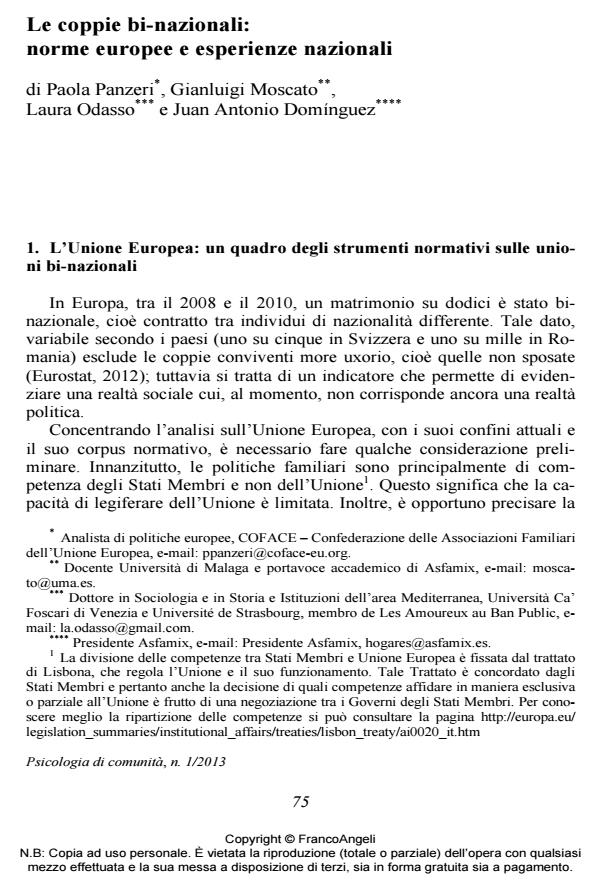The bi-national couples: european standards and national experiences
Journal title PSICOLOGIA DI COMUNITA’
Author/s Paola Panzeri, Gianluigi Moscato, Laura Odasso, Juan Antonio Domínguez
Publishing Year 2013 Issue 2013/1
Language Italian Pages 9 P. 75-83 File size 758 KB
DOI 10.3280/PSC2013-001007
DOI is like a bar code for intellectual property: to have more infomation
click here
Below, you can see the article first page
If you want to buy this article in PDF format, you can do it, following the instructions to buy download credits

FrancoAngeli is member of Publishers International Linking Association, Inc (PILA), a not-for-profit association which run the CrossRef service enabling links to and from online scholarly content.
Migration processes have facilitated the formation of the so-called bi-national families. These couples may suffer from some forms of discrimination, direct or indirect, from their social environment or local and national authorities. Prejudices and negative stereotypes have a negative impact on the couple stability (Moscato, 2012). However, this can also empower couples to engage in collective action to protect their rights (Odasso, 2013). In the present article, authors will firstly analyse the key European legal instruments and their impact on bi-national couples and, secondly, provide examples of responses that the civil society has given in France, Spain and Germany to administrative practices that affect social inclusion and may be in some cases discriminatory.
Keywords: Binational couples, discrimination, european legal instruments, community policies, associations.
Paola Panzeri, Gianluigi Moscato, Laura Odasso, Juan Antonio Domínguez, Le coppie bi-nazionali: norme europee e esperienze nazionali in "PSICOLOGIA DI COMUNITA’" 1/2013, pp 75-83, DOI: 10.3280/PSC2013-001007